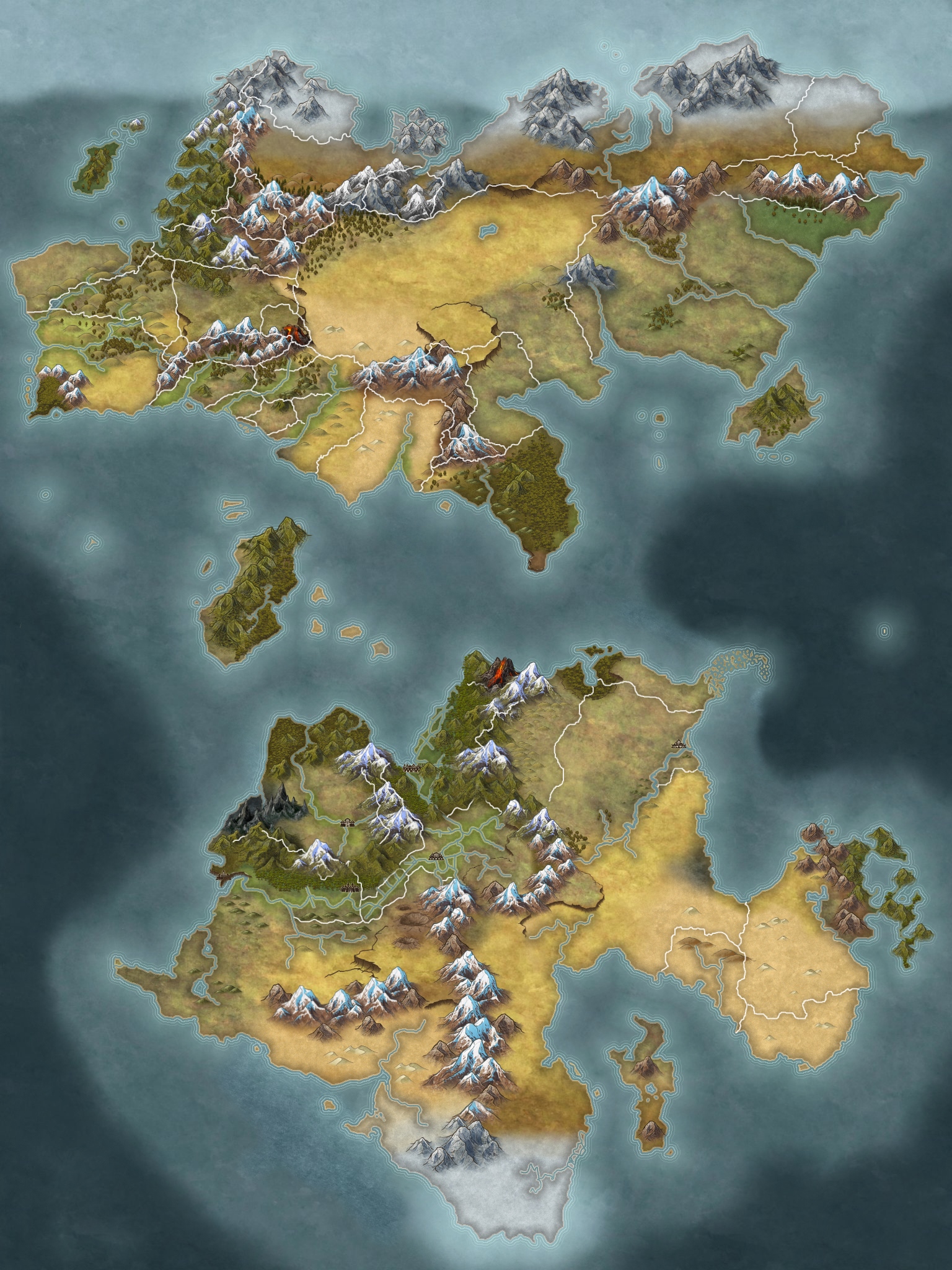The Aeillan Succession War was one of the bloodiest, and the last conflict fought by the Aeillan Empire. The course of the war led to vast destruction of Aeillan territory, the depopulation of many regions, and ultimately, the breakdown of central authority and the final dissolution of the Aeillan Empire as a united political entity.
After the conclusion of the Feloran Wars, another even bloodier period of war for the Aeillans, the Aeillan state was dramatically weakened and held together, barely, by the
Emperor. When the last one died without an heir, this led ultimately to the breakdown of Imperial control as a number of regional governors attempted to stake their claim to the Imperial throne.
The war was fairly long, highly destructive, and utterly devastating to many key regions of the Aeillan Empire. With the breakdown of the centralized civil service, and the lack of a clear successor, the Empire itself broke up. It took several centuries for populations to fully recover from the effects of the war, and many regions still suffer from a comparative lack of development thanks in large part to the economic devastation caused by the war, and the loss of centralized governance.
The Conflict
Prelude
Twenty years after the end of the Feloran Wars, the exhausted Aeillan Empire, which had been struggling financially, and destabilized by the wars, and the later Great Purge was held together merely by the force of a greatly weakend state bureaucracy, and by the will of Alexios III Rauros. Alexios III died without an heir at that time, leaving the throne empty. When the the Exarch of Apepsos tried to claim the throne for himself, Exarchs of Polanis and Spathos, powerful and influential states in their own right objected, and both attempted to stake their own claims. After a brief period of negotiations led to a breakdown of relations, the Exarchate of Polanis, and the Exarchate of Spathos declared war within a few days of each other to claim the throne of the Empire.
The course of the Aeillan Succession Wars can successfully be broke into three primary phases; the first of these started with insurrection from Spathos and Polanis, the centers of Spartharoi and Tyroi power. When these two states broke away, the war was, at first seen as an insurrection of the junior Aeillan ethnic groups. As a result the Empire relied primarily on ethnically Ilosi, and foreign soldiers to put down the rebellion. Engagements in the first phase of the war, most notably the Alysian Campaign, and the Battle of Brundesis, often were vast in scope, but with tightly limited objectives, attempting to secure hostile population centers. It was also in this phase of the war, that the belligerents sought a quick end to the war, launching lightning campaigns against their opponents, with Exarch Alexios Markoi of Spathos attempting to seize directly city of Apepsos during his Ilosi Campaign. The first phase of the war came to an end during the Ilos Campaign, with the major Imperial Victory at the Battle of Mount Kyros destroying the Spathoi field army; however the bloody nature of the campaign resulted in the secession of Nikea from the Empire, and their attempt to seize the throne themselves.
During the Second Phase of the War, as the Nikeans joined in attempting to seize the throne, the war slowed down dramatically; as multiple fronts to the war resulted in the various factions needing to protect themselves on other fronts. This dramatically reduced the size and scope of battles, with most only being fought with only a few thousand soldiers on each side. Emblematic of the Second Phase of the War, was the Armenicoi Campaign between the Empire, Nikea, and Spathos which saw dozens of battles between Aeoleos and Armenicos grinding down the various belligerents. It was during the second phase of the war that saw most of the major naval actions of the war as Polanis, the weakest of the belligerents at the time tried to launch naval invasions of the other powers to bypass their more powerful land armies, and in particular trying to run the Artenesian Sound. These battles in particular, and their impact on Korentis and Artenos caused Korentis to seceede from the Empire and declare its neutrality, and for Artenos to fortfy and seal itself from enemy attack.
During the third and ultimate phase of the war, the notion of organized field armies was nearly totally lost as more and more of the Empire seceded, the ability of the various factions to recruit and supply large armies broke down. The Secession of Halion eliminated Imperial presence in the west, and the secession of Falemesia, and Tymros broke up the battlespace used by Spathos, Nikea, and the Empire, with Korentis cutting Polanis off from all other major players in the war. As a result this final, bloody phase of the war was predominantly oriented around raiding. It was a comparatively quiet affair with engagements shrinking dramatically in size and scope, mostly to frequent minor skirmishes. In the last months of the war, the belligerent factions largely reduced their operations, and eventually an informal armistace was reached, with none of the major belligerents in any position to knock of their foes, and the Empire on the brink of total collapse.
By war's end the Exarchate of Apepsos retained its independence from the various forces aligned against it. However, both Apepsos, and those states opposed to them had been dramatically weakened by the conflict. As a result the immediate outcome of the conflict was largely inconclusive, though the Imperials/Peptids could claim a nominal victory.
In the months after the end of the Succession War, the true damage caused by the war become readily apparent. Many of the Exarchates had seceded from the Empire during the War, and the destruction of infrastructure, the sack of several cities, and the breakdown of centralized authority during the war resulted in the breakup of the Empire shortly after the conclusion of the war. Spathos, Nikea, Polanis, and Korentis formally seceded from the Empire almost immediately after the war's conclusion; with the Free city of Artenos leaving a couple months later. With the secession of the Exarchate of Iskandris, the Empire was formally dissolved.
Historical Significance
The dissolution of the Aeillan Empire has had long lasting implications for the southern regions of the Galisean continent. Most importantly, the lack of a single united Empire on the south of the continent resulted in the expansion of influence for a number of states long held down under the Aeillan Empire; indeed the Golden Ages of Gallaca and Qua'adar started in the years following the Succession War. Over the longer term, the impact of the collapse of the central authority of Apepsos has resulted in the steady shifting of power away from Apepsos and towards the coastal cities as the development of the transcontinental trade network has dramatically increased the economic power of coastal cities, and coastal states.
The breakdown of Imperial authority and the dramatically decreased rate of slave raiding dramatically reduced the ability of Aeillan societies to rely on slave labor to produce goods. As a result, it spurred the development and adoption of some technologies that reduced the need for human labor, with Aeillan states importing dwarven experts in numbers, particularly within the last century, to jumpstart a revolution of machines.









